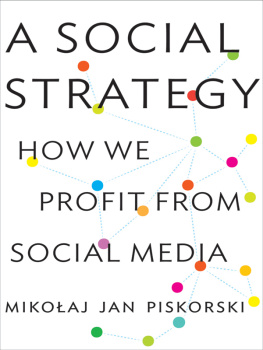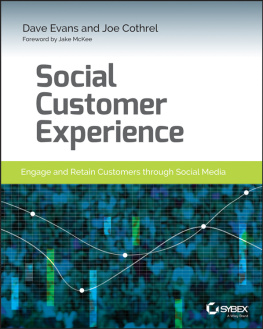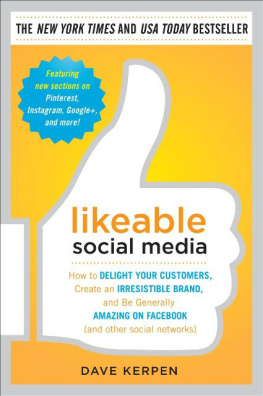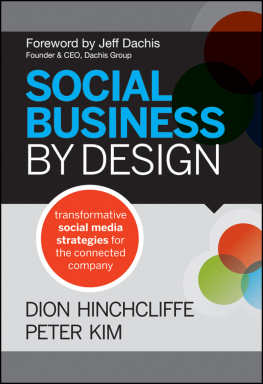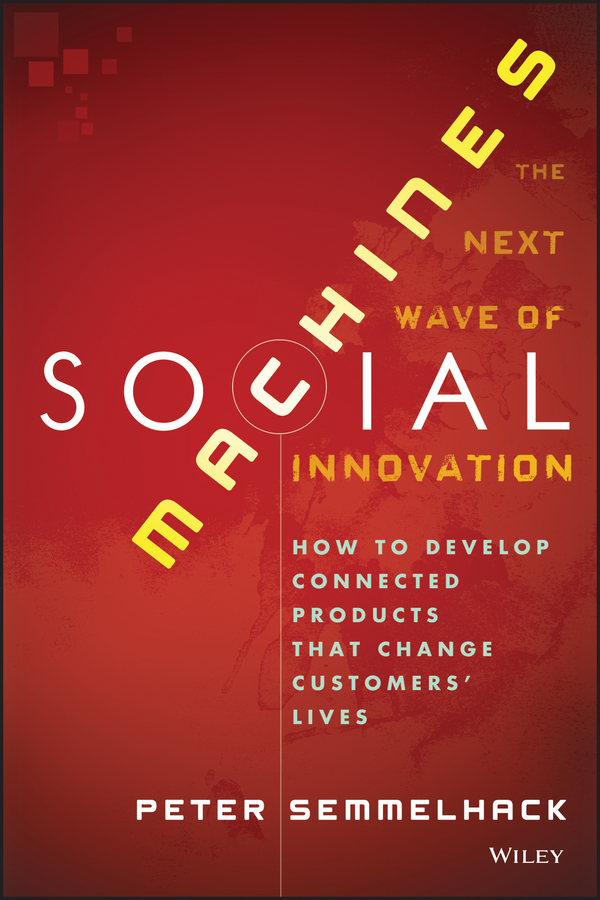Contents

Cover image: iStockphoto/Taice
Cover design: Paul McCarthy
Copyright 2013 by Peter Semmelhack. All rights reserved.
Published by John Wiley & Sons, Inc., Hoboken, New Jersey.
Published simultaneously in Canada.
No part of this publication may be reproduced, stored in a retrieval system, or transmitted in any form or by any means, electronic, mechanical, photocopying, recording, scanning, or otherwise, except as permitted under Section 107 or 108 of the 1976 United States Copyright Act, without either the prior written permission of the Publisher, or authorization through payment of the appropriate per-copy fee to the Copyright Clearance Center, 222 Rosewood Drive, Danvers, MA 01923, (978) 7508400, fax (978) 6468600, or on the web at www.copyright.com . Requests to the Publisher for permission should be addressed to the Permissions Department, John Wiley & Sons, Inc., 111 River Street, Hoboken, NJ 07030, (201) 7486011, fax (201) 7486008, or online at www.wiley.com/go/permissions .
Limit of Liability/Disclaimer of Warranty: While the publisher and author have used their best efforts in preparing this book, they make no representations or warranties with respect to the accuracy or completeness of the contents of this book and specifically disclaim any implied warranties of merchantability or fitness for a particular purpose. No warranty may be created or extended by sales representatives or written sales materials. The advice and strategies contained herein may not be suitable for your situation. You should consult with a professional where appropriate. Neither the publisher nor the author shall be liable for damages arising herefrom.
For general information about our other products and services, please contact our Customer Care Department within the United States at (800) 7622974, outside the United States at (317) 5723993 or fax (317) 5724002.
Wiley publishes in a variety of print and electronic formats and by print-on-demand. Some material included with standard print versions of this book may not be included in e-books or in print-on-demand. If this book refers to media such as a CD or DVD that is not included in the version you purchased, you may download this material at http://booksupport.wiley.com . For more information about Wiley products, visit www.wiley.com .
Library of Congress Cataloging-in-Publication Data:
Semmelhack, Peter, 1965
Social machines : how to develop connected products that change customers lives / Peter Semmelhack.
pages cm
Includes index.
ISBN 978-1-118-47168-5 (cloth)
1. Social mediaEconomic aspects. 2. Social networks. I. Title.
HM741.S46 2013
302.3dc23
2012050967
I dedicate this book to my wife, Suzanne, and children, Tristan and Victoria, my most important social network.
Acknowledgments
This book is the result of a journey Ive been on for several years with many people and organizations. To all of my backers and supportersfinancial, professional, personal, and otherwisea sincere thank you. The material in these pages would have been impossible without you. To everyone I have worked with in bringing Bug Labs to life and through all its stages, this book has your collective fingerprints all over it. Thanks for everything youve contributed. Thanks to everyone at John Wiley & Sons, Inc., for giving me the chance to write my first book and providing a wonderful staff of editors and artists to support and guide me through it all.
Thanks to my family and friends for putting up with my frequent disappearances and silent treatments as I wrote. And finally, thank you to my wonderful wife and children for being my constant source of inspiration, motivation, and laughter.
Part I
Social Machines An Overview
Machines take me by surprise with great frequency.
Alan Turing
Chapter 1
Introduction
It was Saturday morning, and Melissa was making a stop at her local Walmart to pick up a few things. As usual, she parked as close as she could and walked the familiar pavement up to the well-lit store entrance. Upon entering, her eye was drawn to something unfamiliar in the lobby. Standing against what used to be an empty wall was now a large, colorful, slightly unusual-looking vending machine. Intrigued, Melissa approached itand immediately noticed a couple of things. For one, the machine was completely stocked with only one productbright green Cascade dishwashing detergent samples made by Procter & Gamble (P&G). Second, in place of the normal mechanism by which you would insert coins or bills to make a purchase, there was a large, rectangular, color LCD screen that welcomed her with the line, Press here to get your free sample! Her finger instinctively reached out and pressed the screen where instructed. The screen promptly displayed:
Using your smartphone, please visit our products Facebook page. After you log in, go to this URL http://cascade.facebook.com .
If you Like our page, well vend you a free sample of our new Cascade dishwashing detergent right here, right now!
Melissa was hooked. She retrieved her iPhone from her pocket... and paused. Was this strange new transaction worth it? By pressing that Like button, she would be telling all her Facebook friends that she, in fact, liked this promotion. After examining the machine some more and thinking about the companies involved, she pressed the Like button with her pinkie. Two seconds later the vending machine whirred and dropped a sample into the tray for her to pick up. Melissa let out a quick laugh, looked around to make sure it wasnt some kind of trick, and reached in to grab the sample. She would try it tonight, she decided, and noticing the coupon on the back of the packaging, pondered whether she might just pick up a whole box of it while shopping then and there.
Welcome to social machines , a world in which social networks include not just other people but Internet-connected electronic devices, machines, and contraptions of all kinds. Its a world where your next Twitter follower could be your refrigerator and your new Facebook friend your brothers Mustang. It is a business ecosystem of people, companies, and machines collaborating in surprising new ways and opening up innovative possibilities to create real value.
Lets examine all the people and groups that benefitted from this simple interaction at Walmart.
- Melissa received an immediate, tangible benefit in the form of a useful product sample and coupon.
- P&G gained more than it might have by blindly passing out samples on a street corner. By virtue of the Facebook Like, the company gained access to not just the person liking its page but to that persons entire social graphinformation that P&G can now use to more effectively target promotions. Melissas friends can immediately see what shes just liked and, potentially, go visit Walmart themselves and get their own sample, thereby giving P&G access to yet another social graph. Talk about the network effect!
- Walmart got more foot traffic in stores because of all the activity and social buzz around the vending machine. This, combined with the coupon on the back of the packaging, could equate to higher sales at that location.
- The vending machine sellers and operators , instead of just providing a piece of electromechanical dispensing machinery, can now tout that they are providing innovative new ways for brands to interact with their customers and prospects.




